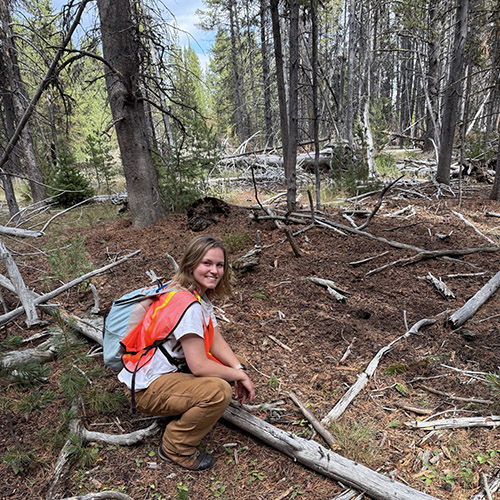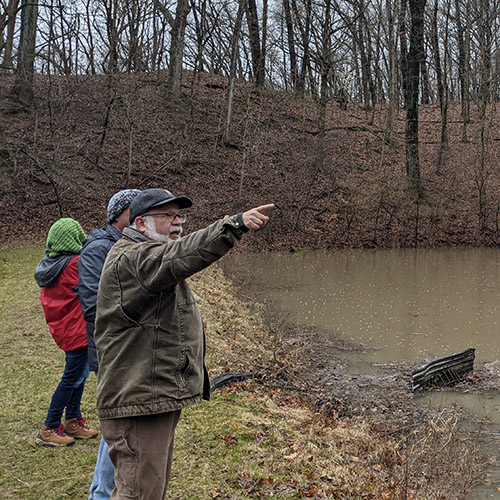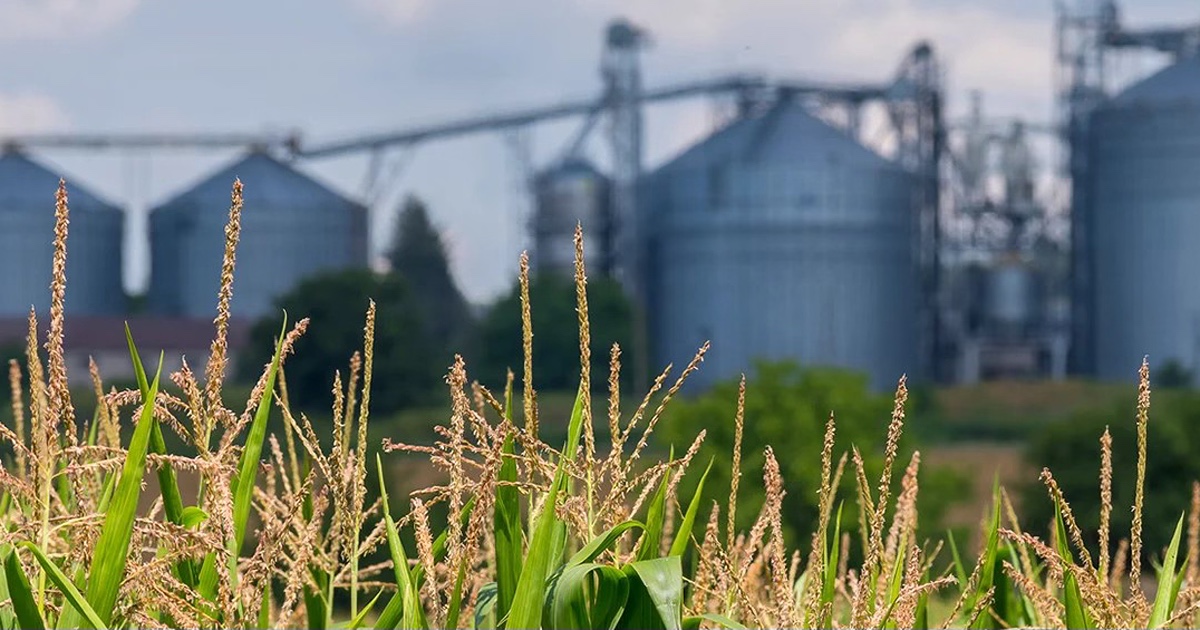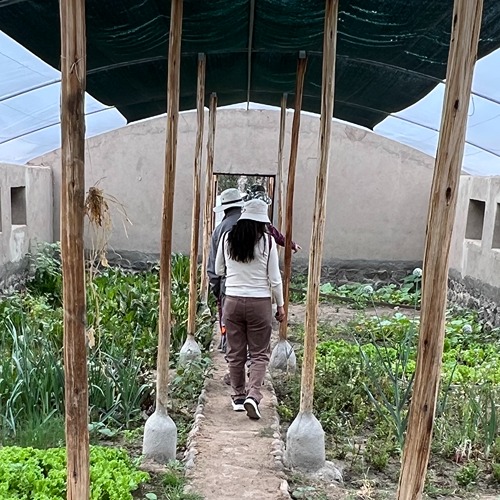Digital Ag Club’s Scarecrow-bot making its debut at Boiler Gold Rush
Thumping hind legs. Two pointed ears. White, fluffy cottontails. The markers of an enemy to gardeners and farmers worldwide.
When Jeanine Arana, a graduate student in Horticulture and Landscape Architecture, followed her roommate Megan Mei Yee Low into a Digital Ag Club meeting, she didn’t expect her complaints about animals eating her strawberries to be taken seriously. The 3-year-old club, however, saw this as the perfect opportunity to build their first robot.

The Digital Ag Club was started by Ankita Raturi, an assistant professor in Agricultural & Biological Engineering, and her lab members. Raturi said, “I think we were looking for a space in which we could tinker and play with technology in a low risk environment. So there's no grade that's required, it’s not research—it’s a space where students can ask questions that they might not be comfortable asking in other venues.”
The club has hosted workshops, learning events and hackathons. Tam Bureetes, a long-term member of the club and Raturi’s lab, has a background in engineering and uses the club as a safe space to help people understand how it works. “Everytime I explain technical stuff to people, I just try to explain the basics so they know how to deal with problems of their own in the future. Everything is possible if you spend enough time and budget on it. But, people think that it’s too hard, and it scares people. So, I want to break down that barrier.”
Recently, the club has started gaining interest in robot competitions, in which clubs build a robot to complete a series of tasks like following lines and moving objects from one place to another through solid mechanics and programming. As a first step towards that undertaking, the club decided to build its first robot for Purdue freshman orientation week, Boiler Gold Rush (BGR).
 "The Fusion Studio and myself are excited to partner with orientation services during BGR to expose students to the different interdisciplinary projects that are possible at Purdue, giving them opportunities to excel in engineering, agriculture and beyond."
-Rachael Yanni, Operation Manager for Fusion Studio for Entertainment and Engineering
"The Fusion Studio and myself are excited to partner with orientation services during BGR to expose students to the different interdisciplinary projects that are possible at Purdue, giving them opportunities to excel in engineering, agriculture and beyond."
-Rachael Yanni, Operation Manager for Fusion Studio for Entertainment and Engineering Bureetes saw a poster advertising grant funding offered by Purdue’s Fusion Studio for Engineering and Entertainment and Orientation Programs for clubs to run activities for BGR. He instantly knew a robot arena could be a great way to welcome more undergraduates into the club. After he brought the idea back to the group, they held a brainstorming session where members pitched ideas for the project. Arana’s idea for a Scarecrow-bot to chase away animals from her strawberry patch ended up being the perfect combination of entertaining, feasible and practical.
Digital Ag Club began work on the project in January, and the first edition of Scarecrow-bot will debut in the Robo Rabbit Run—a game for BGR on August 14-16 from 12 p.m. to 7 p.m. The freshmen will play as the rabbit, using a remote-controlled car to race across the arena and collect carrots from the garden. Scarecrow-bot will then chase it around and try to catch it before time runs out.
Robo Rabbit Run—a game for BGR on August 14-16 from 12 p.m. to 7 p.m. The freshmen will play as the rabbit, using a remote-controlled car to race across the arena and collect carrots from the garden. Scarecrow-bot will then chase it around and try to catch it before time runs out.
Low said the robot arena required more than just technical know-how. “One project can involve so many skills, meaning everyone can contribute. There was a lot of learning other people’s strengths and seeing how they can help you. In addition to the robotics and engineering side, the people who love cutting wood and pipes are super excited about building the arena, artists are designing the carrots for 3D-printing and people who like video games are making the gameplay more competitive.”
To spot the rabbit, the robot actually uses computer vision and automation, two mechanisms under the umbrella of artificial intelligence (AI). From a camera in a watchtower above the set, the Scarecrow-bot can see where the remote-controlled rabbit is going. Then, it drives itself to that spot in the area automatically.
“Students wanted to tinker with this large concept of AI, and so we sliced off a little piece that we know is user friendly,” Raturi said. “The computer vision and automation components within this discipline are mature enough now that there are a lot of really easy-to-use tools and libraries that a group of novices can tinker with.”
 For students like Low, who studies in Raturi’s lab with Bureetes but has a background in food science, the club’s robot project has been an exciting chance to try new things. “The best thing about this for me has been gaining confidence in exploring technical stuff. I can start exploring this field—I will no longer say, ‘Oh, I’m not technical.’ I might not have the technical background, but I can learn.”
For students like Low, who studies in Raturi’s lab with Bureetes but has a background in food science, the club’s robot project has been an exciting chance to try new things. “The best thing about this for me has been gaining confidence in exploring technical stuff. I can start exploring this field—I will no longer say, ‘Oh, I’m not technical.’ I might not have the technical background, but I can learn.”
For engineers like Bureetes, connecting with agricultural scientists is a great way to find practical applications for new technologies. “I don’t want to build a tool that nobody will use. As an engineer, I just plan to solve the problem, but then my question is: what problem should I spend time to solve? I want to know and work on the real problems that farmers have to deal with every day.”
The Digital Ag Club now has plans to send the Scarecrow-bot into action as a real form of garden security. Raturi is working with farm manager Chris Adair at the Purdue Student Farm to set up what she calls “small smart farms” that will test incorporated technology in garden-style plots. The Digital Ag Club is already thinking about how they can improve their robot for the real world: installing cameras inside of the robot instead of in watchtowers and planning new ways it can scare off bunnies without harming them.







